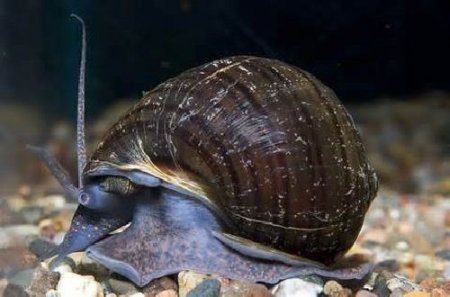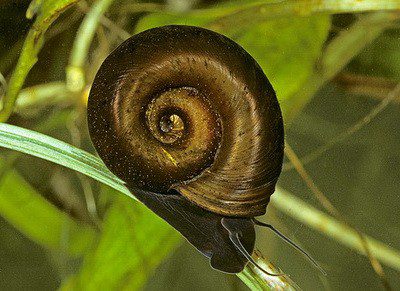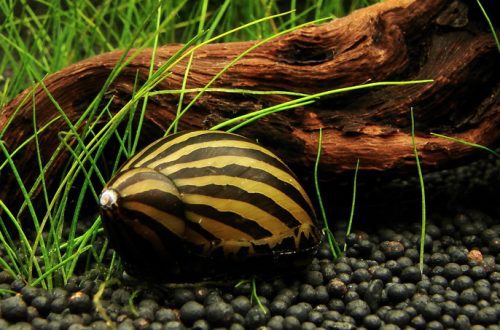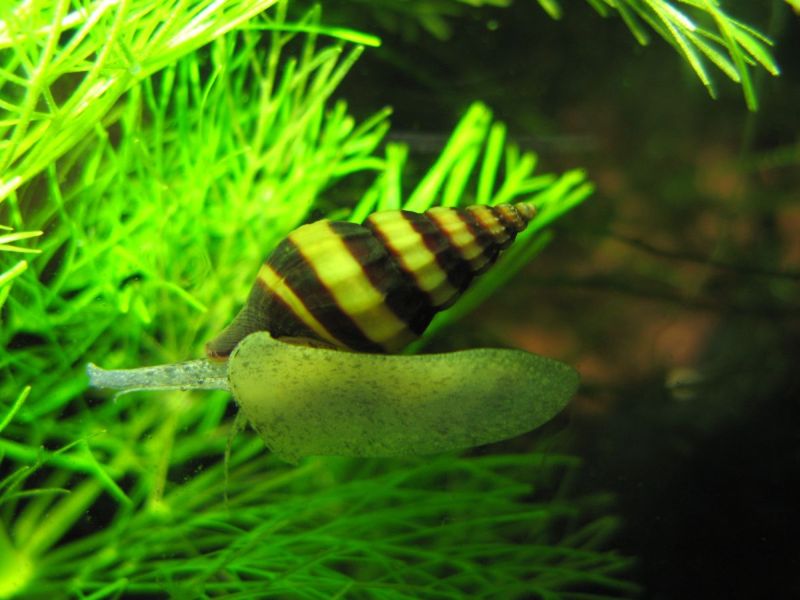
Helena snail: maintenance, breeding, description, photo, compatibility.

The Helena snail is a very beautiful and useful freshwater mollusk that will be very exciting and interesting to watch. However, some features of its content must be taken into account. The Helena snail is a predatory species of freshwater mollusks. Most often, aquarists decide to breed them, who are not able to independently regulate the number or cannot completely get rid of pest snails that have fallen into the aquarium, for example, phys, coils, melania.
DESCRIPTION
Clea helena (Meder in Philippi, 1847), formerly Anentome helena, is one of six species of the genus Clea recorded from Malaysia, Indonesia, Thailand and Laos. Initially, the mollusk was described on the island of Java (Van Benthem Jutting 1929; 1959; Brandt 1974). Clea helena is a member of the Buccinidae family, a predominantly marine gastropod mollusk. Its habitat is not limited to rivers, the snail also inhabits lakes and ponds (Brandt 1974).
Representatives of the genus Clea are registered in Asia on alluvial plains and near large water bodies, for example, the Ayeyarwaddy River Delta (Myanmar), the Mekong River (Indochina), the Chao Phraya River (Thailand) and other large river systems and lakes of Malaysia, Brunei and Indonesia (Sumatra, Java , Kalimantan, SiputKuning, 2010). Natural populations are not found in other areas,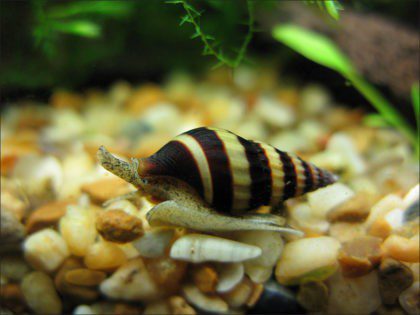
however, the species has become ubiquitous among aquarists in North America, Europe, and Asia. Alluvial plain – a plain that arises as a result of the accumulative activity of large rivers. Particularly extensive alluvial plains arise when rivers wander in areas of tectonic subsidence. In nature, helena inhabits the dirty bottom of reservoirs, so it is undemanding to the chemical composition of water. However, since the species is tropical, low temperatures kill it.
Snail content
A capacity of 3-5 liters is enough for a comfortable existence of one individual, but it is better to give it more space – from 15 liters. In this case, Helena will look more expressive and lively. The maintenance of snails should take place in water with a temperature of 23-27 ° C. If the thermometer drops to 20°C or lower, then the shellfish will not
will be able to reproduce. It is worth taking care of other water qualities: the acidity of the water should be in the range of 7.2-8 pH; water hardness – from 8-15. Particular attention should be paid to the selection of soil. For Helen, sand or gravel will do. Unlike most mollusks, this species does not burrow completely into the ground; the Helena snail searches for food in it.
The community aquarium is not a good place for just purchased clams, they will not be able to find the right amount of food and will most likely die. It will be right if the maintenance at the first stages of life takes place in a separate aquarium, where snails can grow up to 1 cm. If there are a lot of small mollusks (melania, coils) in the aquarium, then you can forget about food for Helen. If they are not available, then any food rich in proteins will do.
Water requirements
It should be noted that the Helena snail is completely unpretentious. Its content, subject to certain rules, does not create problems. Five liters of water is enough for one snail, but it is better if it has more free space – up to twenty liters. Make sure the water is hard. In soft water, the snail is bad, because its shell needs minerals. The most comfortable water temperature is 21-23°C above zero.
When it drops below +19°C, Helena may stop eating. You can plant any plants in the aquarium, since snails are completely indifferent to them. Soil quality matters a lot. Unlike other types of snails, helens do not completely burrow into it, but look for food there, so sand or fine gravel is most suitable for this purpose.
Feeding
The helena snail is a big fan of mollusks such as coils, fizy and, less often, melania. Having chosen a victim, Helena extends a proboscis with a mouth opening right into the shell and begins to literally suck out the contents, leaving an empty shell as a result. On larger snails, for example, snails or tilomelanium, she does not attack, because she simply cannot master it. The predatory snail does not touch even very small snails, into whose shells the proboscis simply cannot crawl.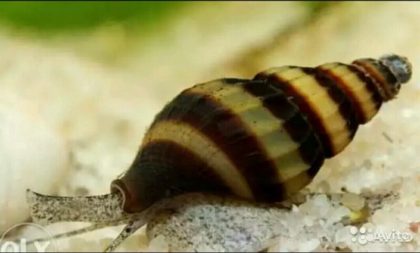
Helena can and should be fed with additional food, especially if she did not start up to eat the bred snails. They eat up the remnants of fish food, actively treat themselves to bloodworms, frozen shrimp, catfish food. In nature, Helena often feeds on carrion. This is also possible in an aquarium – very sick or dead inhabitants may well be eaten by a snail.
Compatibility
Helena only poses a threat to small snails. She gets along quite normally with fish, and if she attacks, then only on a very sick and weakened individual. Swift shrimp are also not included in the list of Helena’s victims, but, as in the case of fish, weak representatives that have not tolerated molting can become a target. Rare species of shrimp are best kept separately.
Like many snails, helena eats fish eggs, but she does not touch the fry: they are usually very nimble, and the snail simply will not catch up with them.
Good news for aquarium plant lovers! Many snails, when there is a lack of food, begin to attack algae, causing them serious harm. Helena snails are completely indifferent to plants.
Breeding
Helen snails are heterosexual, so their reproduction requires the presence of two individuals. As in the case of snails, it is impossible to distinguish a female from a male, therefore it is better to purchase several pieces at once, so that among them there are likely to be heterosexual. In good conditions, they breed quite actively: one female can lay about 200 eggs per year.
Preparing for mating, snails become inseparable for some time: they crawl together, feed, ride each other. Finding a couple of helens that have developed, it is better to plant them in a separate aquarium. Neighborhood with active fish will have a depressing effect on the female, and she will not be able to lay eggs.
Mating is a rather long process, it can take several hours. After that, the female lays her egg on a hard surface: stones, driftwood or other aquarium decorations. It is a transparent pillow, inside of which a yellow caviar is hidden. Caviar ripens within 2-4 weeks.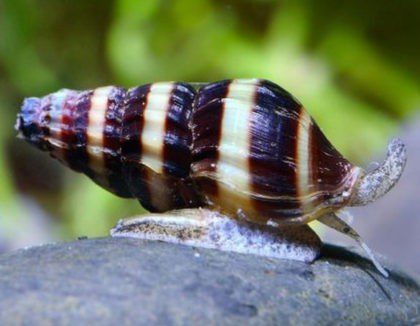

When a small snail hatches, it immediately finds itself at the bottom, after which it hides in the ground. There it remains for several months until it reaches a size of 5-8 millimeters.
Helena is the perfect aquarium helper to slow down the stormy color of the clams that eat everything around. Its content is not at all troublesome, and numerous reviews prove that a small predator will not only be beneficial, but will also become a wonderful element of aquarium decor.





